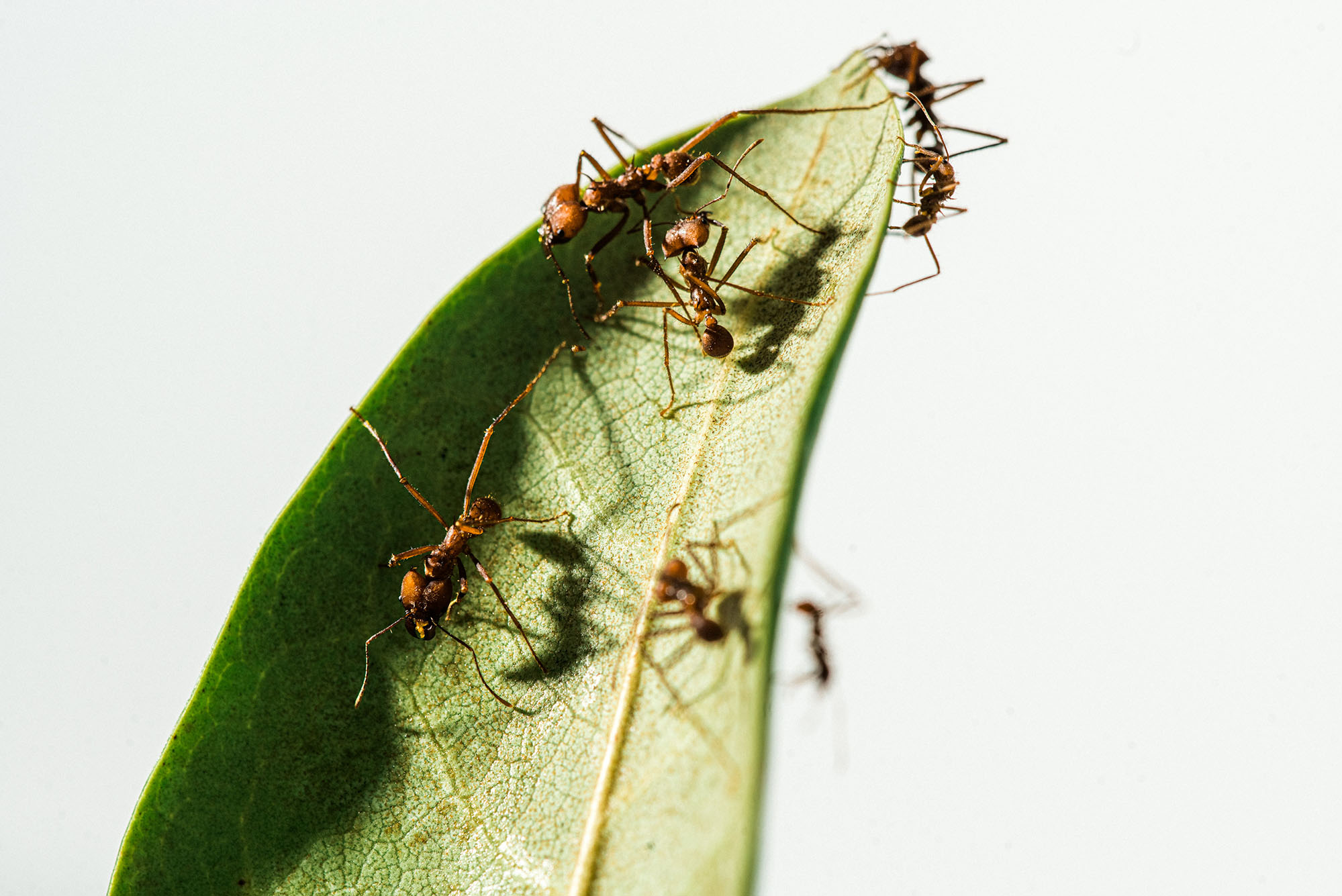BU’s “Ant Man” Studies Ant Brains
For nearly five decades, BU biologist James Traniello has worked with ants to untangle some of biology’s biggest questions about brain evolution
BU’s “Ant Man” Studies Ant Brains
BU’s “Ant Man” Studies Ant Brains
Ants are capable of extraordinary feats. Their individual and collective intelligence—coupled with their physical abilities—allow them to carry out complex tasks, communicate, and work efficiently as a colony. From leafcutter ants meticulously snipping and carrying pieces of foliage three times their size to bullet ants using their ferocious stings to ward off threats, these insects have fascinated scientists for centuries.
Among those studying their complex behavior is James Traniello, Boston University’s very own “ant man” and a College of Arts & Sciences professor of biology who has studied ants for nearly five decades.
“It’s very hard to stop asking questions,” Traniello says. Over the years, he has looked at brain size and social complexity in ants, probing topics like how does collective intelligence impact the evolution of the brain and its structure? Are brain size and metabolism related? Compared to ants, we humans have brains that are unusually large for our body size, says Traniello, and they take up a large proportion of our total metabolism. This raises questions about how both insect and mammalian brain sizes evolved and about the relationship between the size of the brain and how much energy it requires.
To study a range of species (and brain sizes), Traniello’s lab has assembled an impressive collection of ants. His lab currently has over 30 different types, including local carpenter ants and others native to the tropics, like leafcutter ants and bullet ants. The goal is to have the best representation of sizes possible, from some of the smallest—like the little black ant, Monomorium, at only a few millimeters—to the largest known ant, Dinoponera, which can get up to 2.5 centimeters long. Sometimes, across just one species, there are huge differences in body size, relative brain size, and brain region sizes—such as leafcutter ants, which can vary in head width from less than a millimeter to around 7 millimeters.
Traniello’s lab studies a part of the insect brain called the mushroom body, which is equivalent in function to the cortex in mammals and is responsible for learning, memory, and more. He is figuring out how these regions differ based on the cognitive demands on the ants, some of whom, like the workers, have very specialized roles to play in the colony.
“There’s no such thing as a solitary ant,” Traniello says. “Just like there’s really no such thing as a solitary human. You can find people that are reclusive or loners, but that’s not really how we live.”
One key part of his team’s work is making sure colonies thrive in a lab setting. Most of the local ants—which have adapted to the New England climate—aren’t fussy. But those that have traveled from Peru, Panama, or Florida, for example, need environmental chambers that simulate the humidity and temperature of the tropics. Leafcutter ants have particular needs in the lab, Traniello says, because they cultivate a special type of fungus. “The leafcutter ants have this amazing mutualistic relationship with a specific fungus: they cultivate it to feed off of it. They evolved agriculture long before humans did,” Traniello says.
Even after all this time, Traniello remains fascinated by the world of ants and plans to continue asking questions about the evolution, ecology, and neurobiology of their social lives.



Comments & Discussion
Boston University moderates comments to facilitate an informed, substantive, civil conversation. Abusive, profane, self-promotional, misleading, incoherent or off-topic comments will be rejected. Moderators are staffed during regular business hours (EST) and can only accept comments written in English. Statistics or facts must include a citation or a link to the citation.